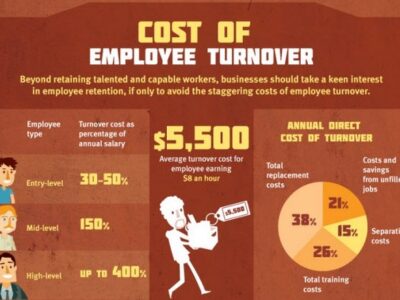With every wave of the pandemic, more companies realize that the benefits of remote work outweigh the risks. After months of balancing hybrid work models, many CEOs recognize that they can build stronger, more productive teams by allowing employees to work from home.
Remote-first company culture is vital to keeping team members engaged and happy. Remote work is an excellent option for many companies, but only when employees are on the same page.
Forbes states that 61% of employees prefer to work remotely. If your company is considering transitioning to a remote first company culture, consider these four basic principles before doing so.
What Is a Remote First Company?
A remote first company is an organization that prioritizes working from home over office spaces. It is dedicated to maximizing the output of its employees by giving them autonomy and freedom.
At the moment, it’s estimated that 16% of companies in the world are strictly remote while 44% don’t allow employees to work from home.
Advantages of a Remote First Company Culture
If a company prioritizes being location independent, it can hire the best talent regardless of location, crafting a team that has the right people in the right seats.
Remote first companies embrace the fact that employees tend to become more dedicated to the team when allowed to work remotely.
This fosters a sense of belonging among employees and encourages them to put in extra effort because they know that it will benefit them personally as much as it will help the company.
Simply put, remote first companies create the conditions for success rather than focusing on geography. Their teams can be anywhere globally, and they can all communicate effectively with a bit of planning and organization.
4 Basic Principles of a Remote First Company Culture
A remote first culture is not just a matter of convenience or productivity. It’s a fundamental aspect of the way you want to work, and it can be significantly more effective than a traditional office setup in terms of building company culture.
According to GoSo Cloud, more than two-thirds of remote employees say they are more productive while working from home.
Ensuring Effective Communication
Hiring remote workers can be scary for managers. One of the biggest hurdles is managing a remote team that works from different time zones and on different values, communication styles, and work ethics.
However, remote first companies are finding ways around this by making sure their teams are cross-functional and communicating regularly.
According to research, remote (77%) and hybrid (81%) employees report higher levels of engagement compared to on-site employees (72%). This leads us to the conclusion that effective communication plays a pivotal role in your company’s ability to be efficient.
Many companies use apps like Slack and Asana to maximize organization, communication, and smooth workflows. This keeps everyone on the same page and the work moving effortlessly.
Building Trust & Providing Support
Even though you’re not in the same building, checking in with your team members at least once a day is crucial. This helps build trust and teamwork while also ensuring everyone on the team knows what’s going on.
Your remote workers will feel more connected to the company if they know someone is there for them and making sure they’re doing well.
The importance of team communication is not only work-specific. While some team members are fine only communicating for work-related purposes, many people miss the human interaction that happens in an office.
You won’t have coworkers around the corner that you can run into if you have a question, and it can get lonely if you don’t have anyone to talk to throughout your workday.
By simply adding an informal Slack channel or allowing space for unsupervised chats, you can help fill the void for casual interaction.
Providing the Right Tools
In a remote first work environment, employees must have access to the right tools and resources. Without proper equipment and technology, employees often struggle to complete their tasks on time.
According to a study from Quantum Workplace, only 45% of employees say that their organization uses consistent tools. This may cause workers to be overworked and overstressed which can lead to a drop in employee satisfaction.
Having a staff directory and contact information, as well as policies and procedures, is also an important aspect. You can grow your resource hub to include training materials as well. Some companies even have curated playlists on their Notion team hub that match the company vibe.
Virtual Team Bonding
Remote team building activities are a fantastic way to bring your team together. Working remotely doesn’t provide the same opportunities as the office. This is a problem because your team is your support, and ensuring they feel connected should be a priority.
Connecting with other people helps us feel happier and more at ease in our daily lives. It is also beneficial for the growth of your business, as a strong team will be able to handle any problem that comes its way.
TeamBonding offers a wide variety of highly engaging team building activities designed to enhance your remote first company culture.
The well-being of your team is of the utmost importance in a remote first company culture. Show your employees that you care about their health and happiness with Employee Wellness – Virtual. This team building activity teaches your team how to manage stress, reduce conflict, and set realistic expectations.
For teams that are more into fun and games, you might consider hosting a Virtual Happy Hour, which comes complete with a kit of ingredients shipped to each participant’s location. Or get competitive and challenge your team to the Quickfire Olympics.
Offering remote jobs is no longer enough to attract top talent. Instead, companies must offer an entirely different set of values, including the ability to work flexibly and from anywhere in the world.
In a remote first company culture, employees can suffer from loneliness due to a lack of personal contact and feel overstressed if unable to unplug completely after work.
Encouraging your team to maintain a proper work-life balance and interactions between employees can help mitigate these negative effects. Virtual team building activities have shown to be the perfect solution for keeping workers happy and engaged.
Reach out to us today to learn how virtual team building activities can make your remote first company a more pleasant work environment.














